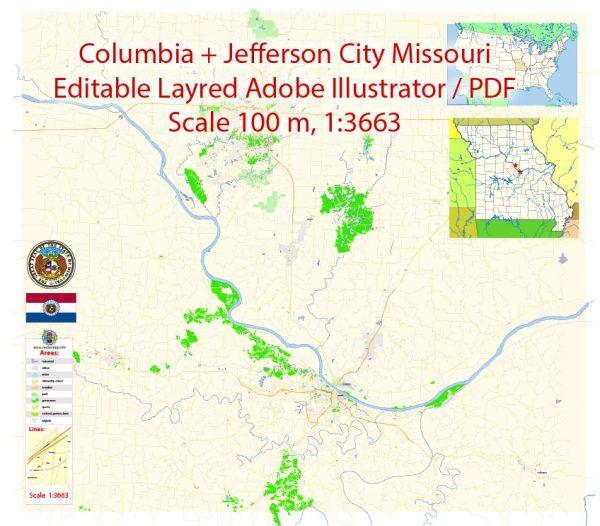Columbia and Jefferson City, both located in the state of Missouri, are distinct cities with their own economies and characteristics. Here’s an economical description of each:
Columbia, Missouri:
- Education: Columbia is home to the University of Missouri, which has a significant impact on the local economy. The university employs a large number of people and attracts students from all over the country, contributing to the local economy through tuition, research, and related services.
- Healthcare: The healthcare sector is also a significant contributor to Columbia’s economy. The University of Missouri Health Care system is a major healthcare provider in the region, offering medical services and research opportunities.
- Retail and Commerce: As a regional hub, Columbia has a thriving retail and commercial sector. The city has a mix of national and local businesses, offering a variety of goods and services to residents and visitors.
- Agriculture: Agriculture plays a role in the economy of Columbia and the surrounding region, as the city is located in the heart of Missouri’s agricultural belt. The agricultural sector includes crop farming and livestock production.
- Manufacturing: Columbia has a growing manufacturing sector, with companies producing a range of products, including food and beverage, machinery, and consumer goods.
Jefferson City, Missouri:
- Government and Public Services: As the state capital of Missouri, Jefferson City’s economy is heavily influenced by government and public services. State government agencies, as well as associated businesses and service providers, are significant employers in the city.
- Healthcare: Jefferson City has a notable healthcare sector, with several hospitals and medical facilities serving the city and surrounding areas.
- Manufacturing: Manufacturing is another important component of the local economy, with companies producing various goods, including machinery, plastics, and consumer products.
- Retail and Commerce: The city has a diverse retail and commercial sector, providing residents with access to a wide range of products and services. These businesses contribute to the local economy through sales and employment opportunities.
- Education: Although not as prominent as in Columbia, Jefferson City also has educational institutions contributing to its economy. This includes public schools and a few higher education options.
- Tourism: Jefferson City attracts visitors due to its status as the state capital and historic sites. Tourism-related activities and services, such as restaurants and hotels, also contribute to the local economy.
Both cities benefit from their strategic locations in Missouri and offer a mix of industries and services that support their respective economies. Additionally, the economic landscapes in these cities may evolve over time, influenced by regional and national economic trends, as well as local developments and government policies.


 Author: Kirill Shrayber, Ph.D.
Author: Kirill Shrayber, Ph.D.